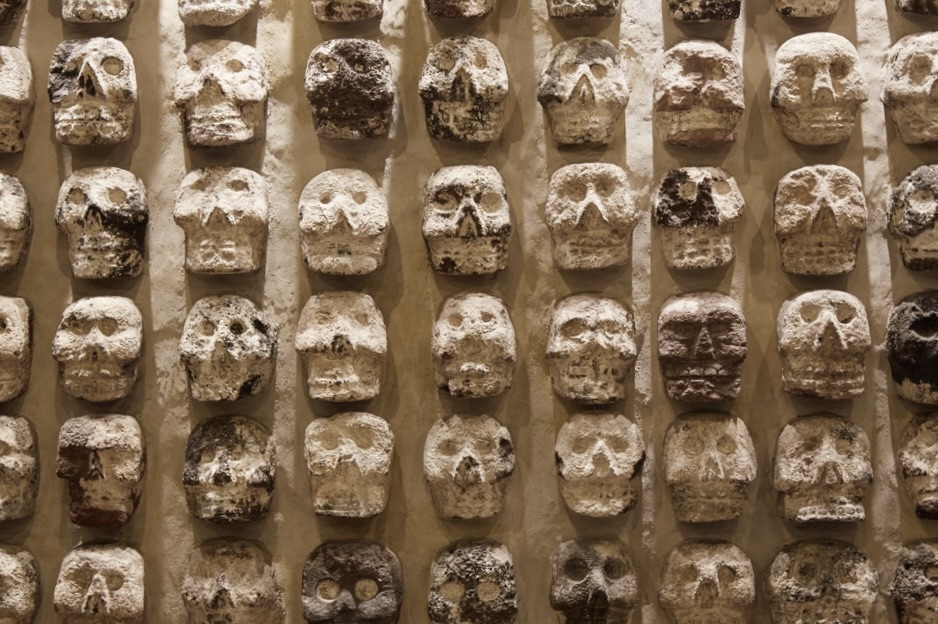
The standard accounts of Aztec sacrifice are virtually too gory to be true. In them, Aztec clergymen reduce beating hearts from the chests of sacrificial victims earlier than throwing them down the steep steps of pyramids. “It is the most terrible and frightful thing,” an account from 1519 said, shortly after the Spanish arrival in Mesoamerica.
However the Aztecs, or Mexica, whose empire controlled most of central Mexico in the 15th century, didn’t see sacrifice as fairly so startling, nor as fairly so easy. The truth is, it wasn’t at all times what it was made out to be by the Spanish, who sensationalized sacrifice as an excuse for conquest, says Nawa Sugiyama, an archaeologist on the College of California Riverside.
In fact, there have been many motivations for the follow, and lots of strategies for its accomplishment. Human sacrifice was undertaken on small, native ranges (typically involving single people) and in massive, state-sponsored occasions (typically involving 1000’s).
Typically there have been non secular motivations at play, and typically there have been social and political ones. However most frequently, it was not lethal and even harmful, as Aztec clergymen and others practiced sacrifice by parting with small quantities of their very own blood.
“Sacrifice shouldn’t be understood as a single phenomenon,” Sugiyama says, although it nonetheless fashioned vital a part of the Aztec world view.
Learn Extra: The Maya Civilization’s Religion Was More Than Just Ritual Sacrifices
The Aztecs and Human Sacrifice
At its core, Aztec sacrifice was the act of providing presents to the gods within the type of blood. As such, its efficiency was intrinsically rooted in Aztec religion. The Mexica believed that people needed to give again to the gods, who had sacrificed themselves to create the present cycle of the world. However whereas godly sacrifice had created the present world, it was human sacrifice that maintained it.
Preventing the moon and stars, the Mexica god Huitzilopochtli may solely transfer the solar throughout the sky with the force of human blood, says Frances Berdan, an archaeologist at California State College, San Bernadino. “This nourished him as he fought off the highly effective forces of the evening,” she says, recounting one of many many Aztec myths about sacrifice.
“It has to do with a relationship, a reciprocity with these animating forces,” Sugiyama says. “It’s a part of a debt reimbursement.” However this wasn’t the Aztecs’ sole motivation, as orchestrating sacrifices may additionally improve a person’s social standing and political energy.
Learn Extra: Does the Grand Civilization of the Inca Empire Still Exist Today?
Origins of Human Sacrifice
After all, whether or not non secular, social, or political in nature, the Aztec traditions of sacrifice didn’t come out of nowhere. There have been quite a few cultural precedents for human sacrifice all through Mesoamerica: Everybody from the Maya to the Toltecs of Tula practiced some type of it.
Archaeologists say that traditions of Aztec sacrifice seemingly hint again to the town of Teotihuacan, at the very least partly, which sat about 30 miles to the northeast of the Aztec capital, Tenochtitlan. Teotihuacan had been deserted for hundreds of years by the point the Aztecs started constructing their capital and its central temple, the Templo Mayor, however the metropolis nonetheless influenced the Aztecs.
The truth is, the title Teotihuacan is an Aztec one, which means “the place the place gods had been created,” because the Aztecs believed Teotihuacan was the place the present cycle of the world started. Archaeologists nonetheless don’t know what its unique inhabitants known as it, understanding it solely by way of the Mexica time period.
Definitely, a few of what the Aztecs thought of Teotihuacan and different cultural predecessors was based mostly on their very own practices. However archaeologists have found evidence of mass human sacrifices with some similarities to these of the Aztecs in Teotihuacan, albeit to not the dimensions present in Tenochtitlan, suggesting that the tradition may have left an impression.
Learn Extra: Who Built Teotihuacan, One of the Largest and Most Impressive Ancient Cities in Mesoamerica?
Who Was Sacrificed?
The kind of sacrifice and of sacrificial sufferer relied on the event. Some mass sacrifices in Teotihuacan present indicators of serving militaristic functions, Sugiyama says. And the identical is true in Tenochtitlan. Many sacrificial victims had been captured by way of the Mexica conflict machine, and subsequently sacrificed on top of pyramids and temples, typically in a fashion just like that described by the Spanish. However this went two methods.
“Aztec warriors had been likewise captured by their enemies in battle, and consequently sacrificed atop these peoples’ temples,” Berdan says.
Whereas such a sacrifice was widespread, its victims weren’t precisely advantageous with their fates. “It was not that they preferred it,” Sugiyama says. “It was as terrorizing for them as it’s for us.”
On a smaller scale, retailers and others would sacrifice slaves in public to extend their social standing. However the most typical type of sacrifice didn’t contain warriors or slaves and even demise. Whereas Aztec clergymen would let blood from their ears or other body parts, members of the general public would sacrifice small quantities of blood at particular ritual ceremonies.
“The blood from these occasions was supplied to at least one or one other of the deities,” Berdan says.
Learn Extra: How the Aztec Calendar Accounted for Leap Years
Large Rituals
Although maybe not the most typical, essentially the most outstanding cases of sacrifice had been people who occurred in huge, state-sponsored rituals. One such ritual befell in 1487, after an enlargement of the Templo Mayor by the Aztec king Ahuitzotl. Some experiences maintain that 20,000 to 80,000 people had been sacrificed at this ceremony.
“Even the decrease quantity might be exaggerated, merely contemplating the logistics of the sacrificial rituals,” Berden says. Nonetheless, each allies and enemies would have witnessed the killing of many captured warriors.
“This was a bald and intentional demonstration of Mexica energy,” Berdan says, “with the top aim to intimidate them and encourage terror.”
Some state sponsored sacrifices additionally served to bolster cultural beliefs, with some individuals personifying gods earlier than being sacrificed. The New Hearth Ceremony, for example, occurred each 52 years, when the 365-day photo voltaic calendar met with the ritual 260-day calendar.
Throughout the celebration, victims’ hearts were removed, and fires were started in their chests. These flames had been extraordinarily vital, as a result of if they didn’t burn nicely, the Aztecs believed their world would finish.
As in most different instances of human sacrifice, the New Hearth Ceremony wasn’t merely meant to finish lives.
“The Mexica (and others in Mesoamerica) believed that life and demise had been interwoven in an limitless cycle,” Berdan says. “Human sacrifices contributed to this cycle, assuring life and sustenance.”
Learn Extra: The Fall of the Aztec Empire: What Really Happened in the Battle of Tenochtitlan?
Article Sources:
Our writers at Discovermagazine.com use peer-reviewed research and high-quality sources for our articles, and our editors evaluate them for accuracy and trustworthiness. Evaluate the sources used under for this text:
Joshua Rapp Study is an award-winning D.C.-based science author. An expat Albertan, he contributes to quite a lot of science publications like Nationwide Geographic, The New York Instances, The Guardian, New Scientist, Hakai, and others.





